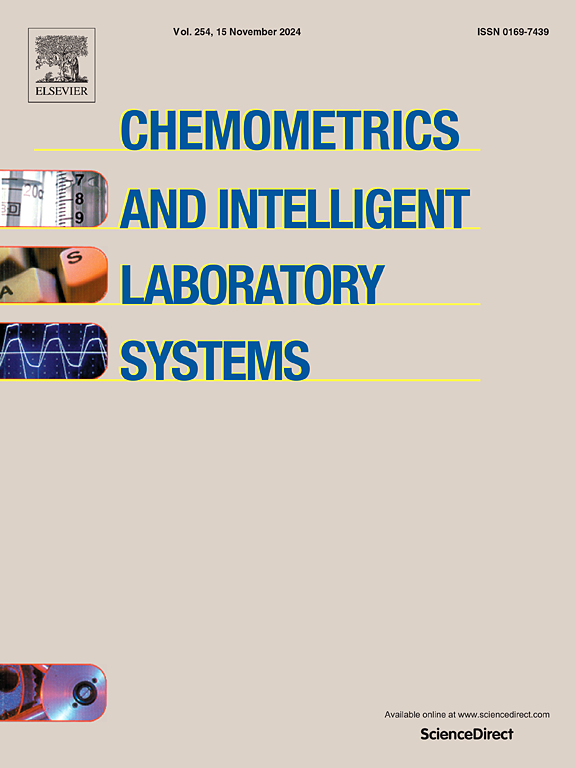Advancing QSAR models in drug discovery for best practices, theoretical foundations, and applications in targeting nuclear factor-κB inhibitors- A bright future in pharmaceutical chemistry
IF 3.8
2区 化学
Q2 AUTOMATION & CONTROL SYSTEMS
Chemometrics and Intelligent Laboratory Systems
Pub Date : 2025-10-03
DOI:10.1016/j.chemolab.2025.105544
引用次数: 0
Abstract
Developing robust and valuable quantitative structure-activity relationship (QSAR) models has become increasingly significant in modern drug design. These models play a crucial role by enabling the determination of molecular properties of compounds and predicting their bioactivities for therapeutic targets. QSAR models utilize various machine learning methods, such as support vector machines (SVM), multiple linear regression (MLR), and artificial neural networks (ANNs). These widely applicable methods have substantial implications for developing more precise medicines. The effectiveness of QSAR research dramatically relies on how each process step is conducted and how the analysis is carried out. This paper discusses the essential steps in developing and validating QSAR models using machine learning. A case study is presented to provide a clear example, focusing on 121 compounds acting as potent nuclear factor-κB inhibitors (NF-κB). The study compares multiple predictive QSAR models based primarily on linear and non-linear regression techniques.
推进QSAR模型在药物发现中的最佳实践,理论基础,以及针对核因子κ b抑制剂的应用-药物化学的光明前景
建立稳健且有价值的定量构效关系(QSAR)模型在现代药物设计中变得越来越重要。这些模型在确定化合物的分子特性和预测其治疗靶点的生物活性方面发挥着至关重要的作用。QSAR模型利用各种机器学习方法,如支持向量机(SVM)、多元线性回归(MLR)和人工神经网络(ann)。这些广泛适用的方法对开发更精确的药物具有重大意义。QSAR研究的有效性很大程度上取决于每个过程步骤如何进行以及如何进行分析。本文讨论了使用机器学习开发和验证QSAR模型的基本步骤。一个案例研究提出了一个明确的例子,重点是121种化合物作为有效的核因子-κB抑制剂(NF-κB)。该研究比较了主要基于线性和非线性回归技术的多个预测QSAR模型。
本文章由计算机程序翻译,如有差异,请以英文原文为准。
求助全文
约1分钟内获得全文
求助全文
来源期刊
CiteScore
7.50
自引率
7.70%
发文量
169
审稿时长
3.4 months
期刊介绍:
Chemometrics and Intelligent Laboratory Systems publishes original research papers, short communications, reviews, tutorials and Original Software Publications reporting on development of novel statistical, mathematical, or computer techniques in Chemistry and related disciplines.
Chemometrics is the chemical discipline that uses mathematical and statistical methods to design or select optimal procedures and experiments, and to provide maximum chemical information by analysing chemical data.
The journal deals with the following topics:
1) Development of new statistical, mathematical and chemometrical methods for Chemistry and related fields (Environmental Chemistry, Biochemistry, Toxicology, System Biology, -Omics, etc.)
2) Novel applications of chemometrics to all branches of Chemistry and related fields (typical domains of interest are: process data analysis, experimental design, data mining, signal processing, supervised modelling, decision making, robust statistics, mixture analysis, multivariate calibration etc.) Routine applications of established chemometrical techniques will not be considered.
3) Development of new software that provides novel tools or truly advances the use of chemometrical methods.
4) Well characterized data sets to test performance for the new methods and software.
The journal complies with International Committee of Medical Journal Editors'' Uniform requirements for manuscripts.

 求助内容:
求助内容: 应助结果提醒方式:
应助结果提醒方式:


